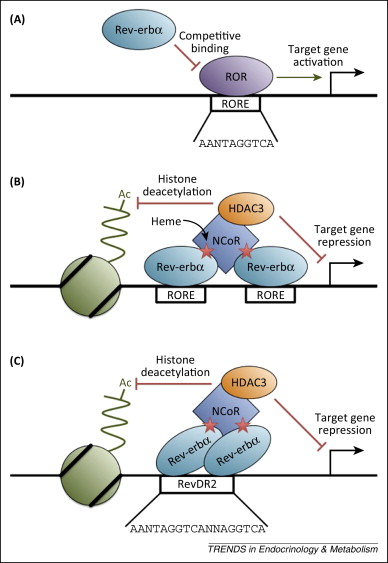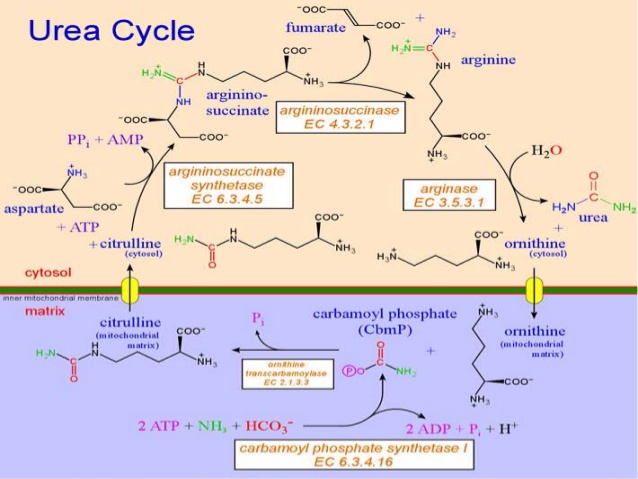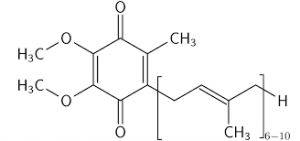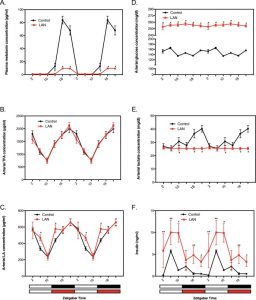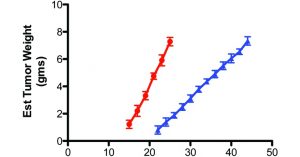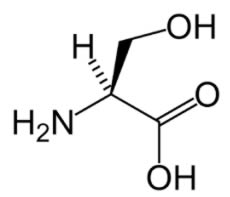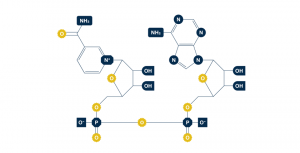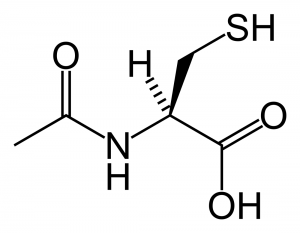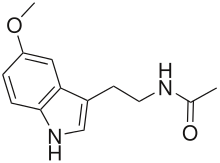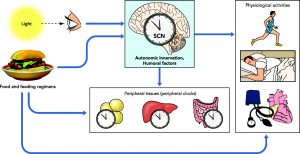Hey team, remember when I was making wild predictions about REV-ERB alpha?
“Food for thought: an endogenous ligand of Rev-erb is heme (the iron-binding element in red blood cells). Heme is degraded into bilirubin. Elevated levels of bilirubin cause jaundice. A treatment of neonatal jaundice is exposure to blue light. Blue light is a major regulator of circadian rhythms and Rev-erb is an executive-level player in this game. The primary mechanisms of blue light appear unrelated in these two models (melanopsin activation vs. bilirubin photoisomerization), but seem intertwined, because heme activates Rev-erb. Cool.” (From HERE)
and statements:
“Pharmaceutical-grade circadian augmentation = unwittingly better-timed meals? Improved body composition? …they were eating more and moving less. … One possible mechanistic explanation comes from mice lacking Rev-erb in skeletal muscle (Woldt et al., 2013). Mitochondrial biogenesis was impaired and exercise tolerance was reduced in these mice. Spontaneous physical activity was lower; thus, it stands to reason that Rev-erb agonism may improve skeletal muscle mitochondrial function. This isn’t entirely consistent with the drug study, but pretty close.” (From HERE)
REV-ERB is really really good for skeletal muscle.
Beta-hydroxybutyrate inhibits activation of the NLRP3 inflammasome.
Well, so does REV-ERB alpha! In a new study, knocking down REV-ERB alpha jacked up NLRP3 and pharmacologically enhancing it attenuated NLRP3 (Pourcet et al., 2017). The consequence of this in REV-ERB KO mice injected with LPS was hyper-inflation. No bueno. Mice given the commercially-available REV-ERB alpha agonist “Stenabolic” were protected.
I’m geeking out about REV-ERB alpha & SR9009. And fwiw, I don’t think anything will actually fully replace the benefits from actual physical activity and/or exercise, although it’s very hard for some people; eg, COPD, CHD, etc. In those populations, if they can’t exercise enough to really improve their condition, something like this might help. But I’m sure perfectly healthy people are going to try it. If you do, let us know in the comments!
For more about this fascinating research and how it can work for you (or if you just like what I do and want to support it), head over to Patreon! Five bucks a month gets you full access and there are many other options.
It’s ad-free and you can quit if it sucks 🙂
Also, I’m open to suggestions, so please don’t hesitate to leave a comment or contact me directly at drlagakos@gmail.com.
UPDATED Affiliate links: still looking for a pair of hot blue blockers? Carbonshade is offering 15% off with the coupon code LAGAKOS and Spectra479 is offering 15% off HERE.
If you have no idea what I’m talking about, read this then this.
20% off some delish stocks and broths from Kettle and Fire HERE.
If you want the benefits of ‘shrooms but don’t like eating them, Real Mushrooms makes great extracts. 10% off with coupon code LAGAKOS. I recommend Lion’s Mane for the brain and Reishi for everything else.
Regulation of Circadian Behavior and Metabolism by Synthetic Rev-erb Agonists (Solt et al., 2013)
Rev-erb alpha modulates skeletal muscle oxidative capacity by regulating mitochondrial biogenesis and autophagy (Woldt et al., 2013)
“Seriphos“


